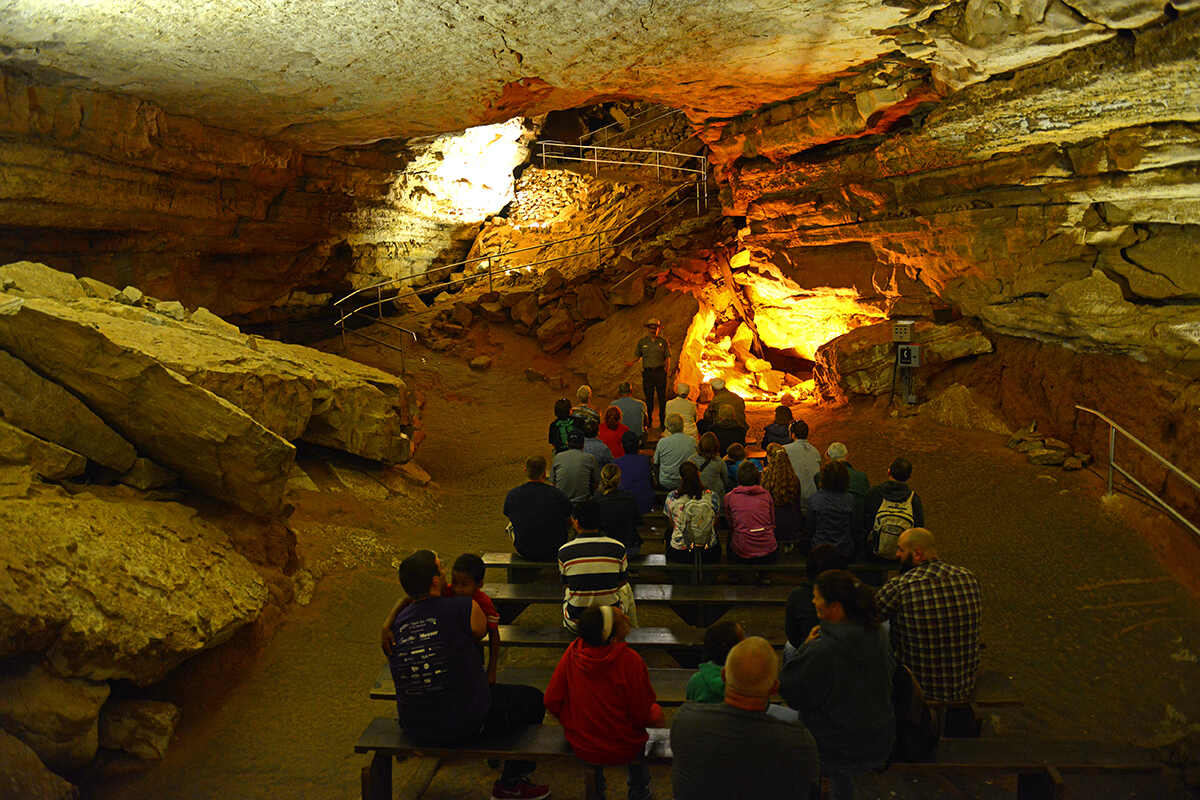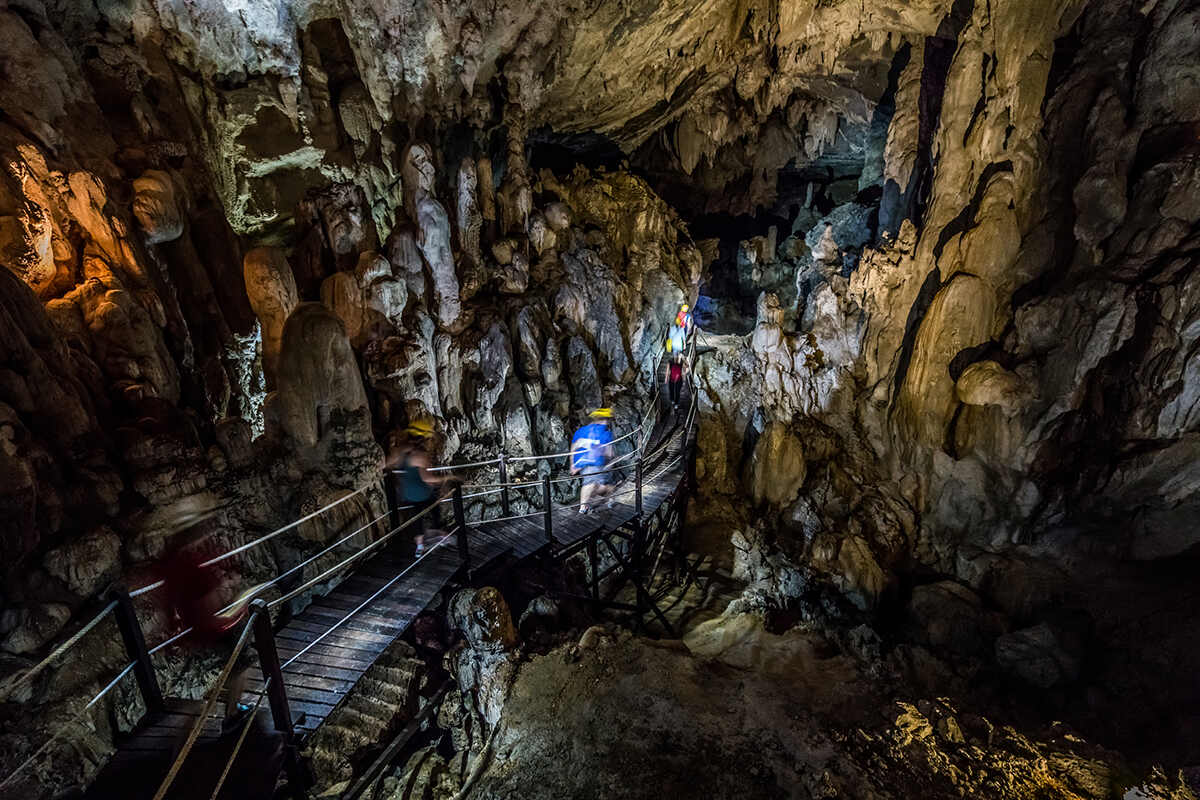
There are thousands of caves all around the world, varying from tiny holes to vast caverns. The majority form in karst, a type of landscape made of limestone, dolomite and/or gypsum rocks, which slowly dissolve in the presence of slightly acidic water. In most caves, the dissolving process takes more than 100,000 years to make enough space for a single person. Other caves are formed by erosion of the coastline, by meltwater carving tunnels into glaciers and by highly fluid lava leaving behind a solid tube. Here we depict the largest (by volume), the deepest and the longest caves discovered so far.
World’s largest cave by volume in cubic metres
1) Hang Son Doong, Phong Nha-Ke Bang National Park, Vietnam – 38.5m m3

On 10 December 1990, during a routine trip into the jungle, logger turned cave guide Ho Khanh accidentally discovered the entrance to Hang Son Doong, a vast cave home to underground rainforests, the ‘Great Wall of Vietnam’ (a 90-metre-high calcite barrier) and various unusual cave formations, including huge cave pearls, towering stalagmites and phytokarst.
>>To put it into perspective… that’s 15x larger than the Great Pyramid of Giza!
2) Miao Room, Guizhou, China – 10.8m m3
The chamber, discovered by a French expedition called Gebihe’89 in 1989, measures 852 metres in length, 191 metres in width, has an area of 154,500 square metres ) and a volume of 10,780,000 cubic metres.
3) Sarawak Chamber, Gunung Mulu National Park, Malaysian Borneo – 9.7m m3

The Royal Geographical Society ran an expedition in 1977–1978 to the Mulu Caves with more than 100 scientists in the field for 15 months. This was followed by a series of 20 expeditions named the Mulu Caves Project.
World’s longest cave system (km)
Mammoth cave, Kentucky, USA – mapped to 676 kilometres

Mammoth Cave is currently mapped and explored to 676 kilometres, but is likely far larger. Humans have been making use of the cave for thousands of years, with archaeological evidence suggesting that people entered it 5,000 years ago, exploring more than 30 kilometres of cave passage.
>>To put it into perspective… that’s 6.5x the width of the English Channel!
World’s deepest cave
Verëvkina cave, Arabika Massif, Georgia – 2,212 metres
First discovered in 1968 by Soviet speleologists, Verëvkina is located within the Gagra Mountain Range in Abkhazia, a Russian-supported breakaway region of Georgia. The cave was only recognised as the world’s deepest in 2018, when a team reached a terminal sump at the water table at 2,212 metres, knocking the neighbouring Krubera cave (2,197 metres) into second place.




